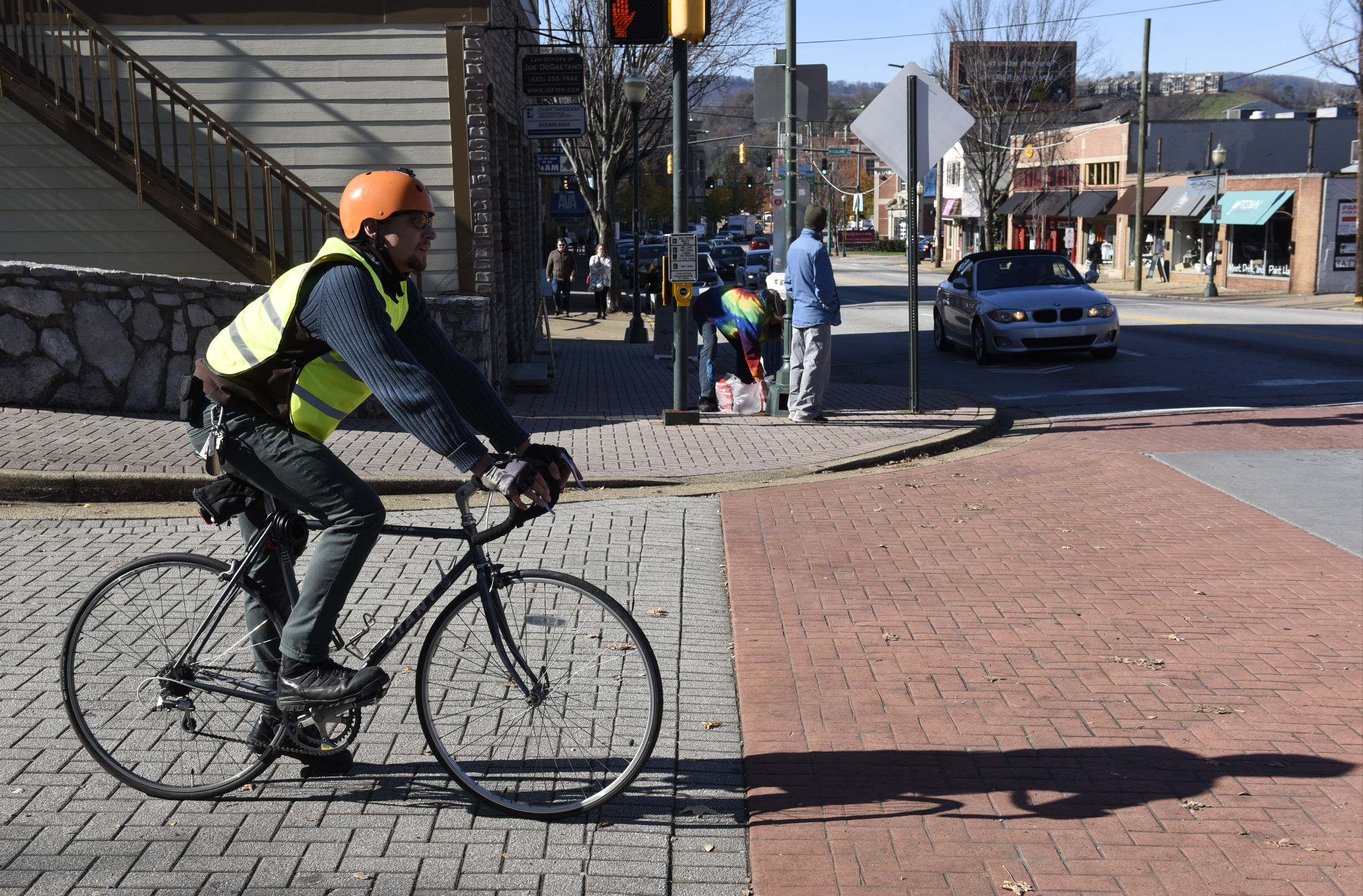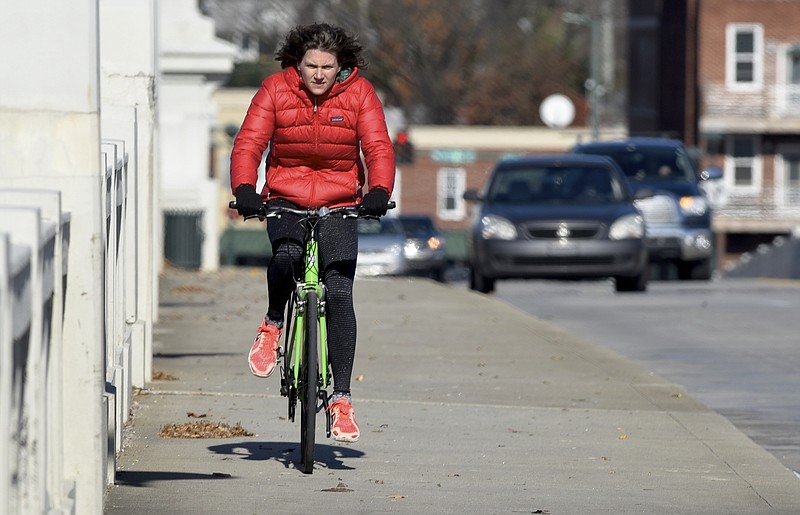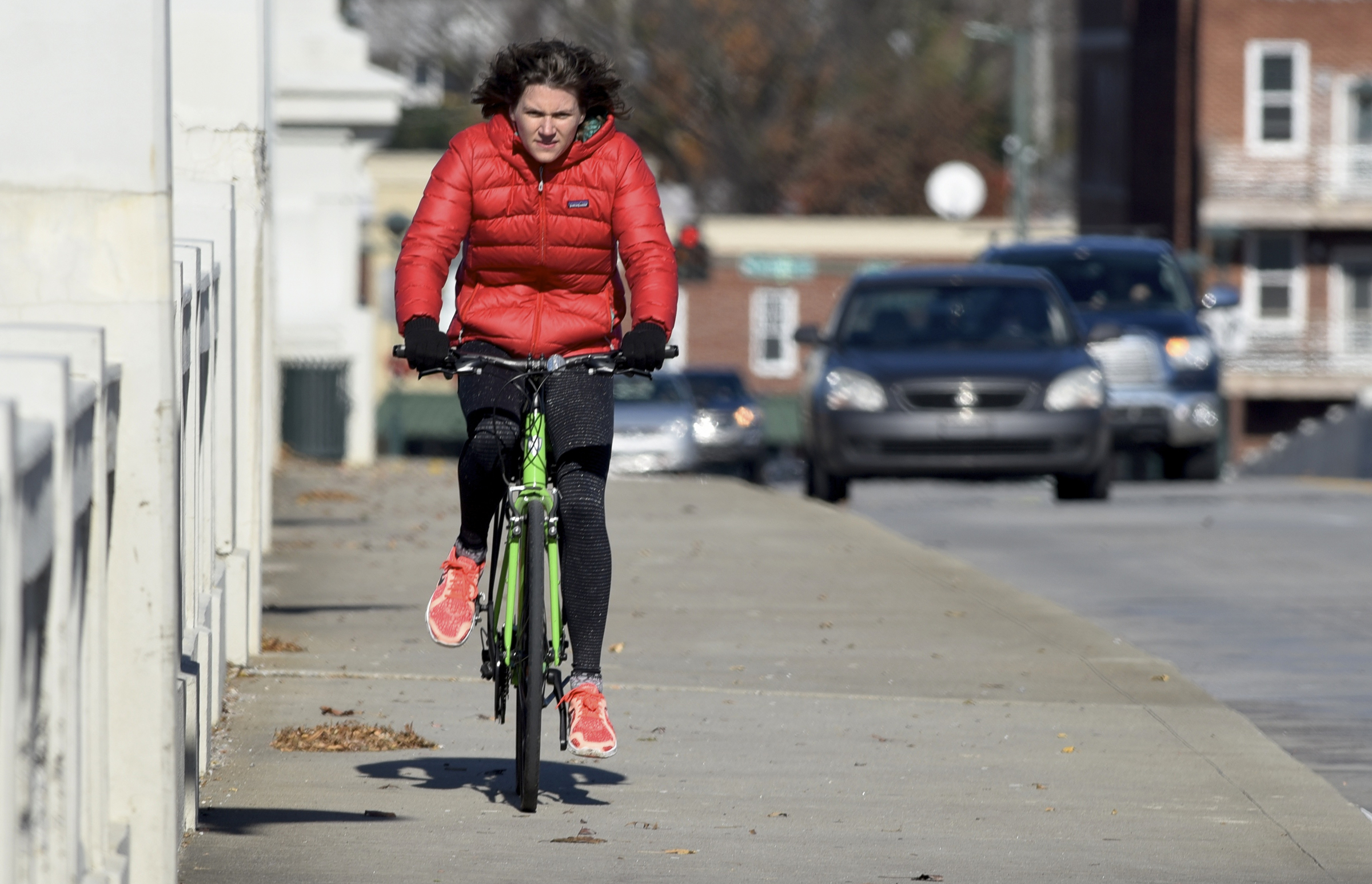 Phillip Van Winkle waits on his bicycle at the entrance to the Walnut Street Bridge waiting for the light to change so that he can turn left on Frazier Avenue on Thursday, Dec. 3, 2015, in Chattanooga, Tenn. The city's bike safety program is nearly a year old, and coincides with a significant reduction in accidents between bicycles and cars.
Phillip Van Winkle waits on his bicycle at the entrance to the Walnut Street Bridge waiting for the light to change so that he can turn left on Frazier Avenue on Thursday, Dec. 3, 2015, in Chattanooga, Tenn. The city's bike safety program is nearly a year old, and coincides with a significant reduction in accidents between bicycles and cars. Did you know?
› It is not illegal for bicyclists to ride on the sidewalk, but the safest place for a bicyclist to ride is in the road or a bike lane.› Bicyclists are not allowed to ride more than two abreast in a road.› All bicyclists must yield to pedestrians in crosswalks.› At night, all bicyclists must have a steady white light on the front of the bike and a red reflector on the rear.Source: Bike Walk Chattanooga, Chattanooga Police Department
Each morning, Phillip Van Winkle climbs on his bicycle and pedals about six miles from his home in East Ridge to his job on Main Street in Chattanooga.
"I have all my safety gear on with lights blinking," he said. "There's the occasional hothead or yahoo coming hard on your tail. But that's to be expected."
Van Winkle is one of a growing number of cyclists taking to the streets in Chattanooga - and for the past year, police have been trying to make the roads safer for both cyclists and the drivers who must navigate around them.
Since police launched a new Bike Safety Initiative in October 2014, officers have taken a twofold approach, balancing their efforts between education and enforcement.
Police responded to 35 crashes between bicyclists and vehicles in the 12 months before the initiative launched; that dropped to 26 in the year after the initiative began.
Officer Rob Simmons believes the initiative helped spur that decline.
"In the beginning of the educational enforcement, I was pulling over a lot of people - and I have noticed a decline in finding violators over the past year," he said.
On the enforcement side, officers estimate they stopped about 75 bicyclists and 40 motorists for bicycling-related infractions during the course of the year. The department also deployed a new radar device that measures how much space a car leaves when passing a bike - allowing bike officers to stop vehicles that leave less than the three feet required by state law.
Of those 115 traffic stops, police issued two citations, Simmons said.
"I hate writing tickets," he said. "I find education can be a better way to modify behavior."
A bicycle officer for eight years, Simmons prefers to hand out pocket-sized pamphlets during traffic stops instead of $50 citations. The short guides, created and paid for by the advocacy organization Bike Walk Chattanooga, outline the rules of the road for both cyclists and motorists.
As part of the initiative, Simmons said, he reviewed crash records for the last three years and determined that the majority of crashes between bicyclists and vehicles are the fault of the cyclist. But there are problems on both sides, he added.
He often sees bicyclists stop at red lights, look both ways and then run the red light if there's no traffic - a dangerous habit. It's also not safe, he said, for a bicyclist approaching a line of cars stopped at a red light to use the shoulder to move to the front of the line.
"Now all those cars have to safely pass [the cyclist] again when the light turns green," he said.
On the other side, he said, drivers often think bicyclists are supposed to ride on the sidewalk and fail to leave enough space when passing a bike.
Simmons is one of five bike patrol officers at the department. Along with enforcement, the officers designed billboards that detailed the three-foot law - posted on about 30 donated digital spaces around town - and met with bicycling groups, businesses and student groups about bicycling safety.
Mike Farr, the executive director of Bike Walk Tennessee, said he's worked with police departments in cities across the state and has found Chattanooga to be a leader regarding education from the police.
"We've had more engagement with the Chattanooga Police Department because they've been so receptive and eager to implement these programs," he said.
Contact staff reporter Shelly Bradbury at 423-757-6525 or sbradbury@timesfreepress.com with tips or story ideas.

